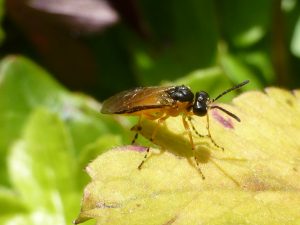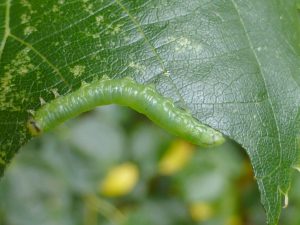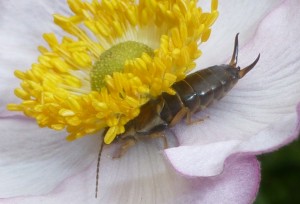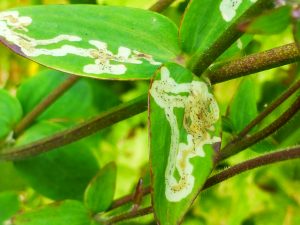Just over 350 species of invertebrate were recorded at the Edinburgh Botanics in 2013. Of these, just under 200, or 55%, had not been recorded in the Garden since records began to be kept in 2007. They included:
8 species of butterfly (2012, 7) – numbers however were very low all year
108 species of moths – 65 of them first records for the Garden (2012, 24; much of the big increase is due to the moth-trapping event in the June 2013 BioBlitz, and also increased efforts to record leaf-miners later in the year)
45 species of Hymenoptera (bees, wasps, ants and sawflies) – 15 of them first records for the Garden (2012, 40)
2 damselflies (2012, 1)
37 hoverflies – 3 of them first records (2012, 45)
58 other flies – 27 of them first records, many of them leaf-miners (2012, 30)
20 beetles – 10 of them first records (2012, 13)
1 cockroach (2012, 0)
1 mayfly (2012, 1)
16 bugs – 9 of them first records (2012, 7)
25 spiders and mites – 18 of them first records (2012, 8 + several not identified)
24 slugs, snails and other molluscs – 23 of them first records (2012, 2)
9 crustaceans – 8 first records (2012, 1)
3 annelids (worms, leeches and allies), all of them new records (2012, 0)
6 centipedes and millipedes, 5 of them new records (2012, 2)
4 others (rotifers, tardigrades and other plankton or soil microfauna), all new records (2012, 0)
Around half of these were recorded only during the BioBlitz in June, by experts, while the other half were recorded in my daily walk-rounds. The final total is all the more remarkable since, between 1 January and 21 April 2013, I had only recorded 5 invertebrate species in the Garden compared with 35 in the same period of 2012, due to 2013’s long cold spring. The warm and relatively dry summer helped bees, but hoverfly diversity in 2013 was down on 2012, and actual numbers of hoverflies were very markedly down for some species, particularly the Eristalis species (drone flies) which were scarcely evident, compared with large numbers in 2012.




